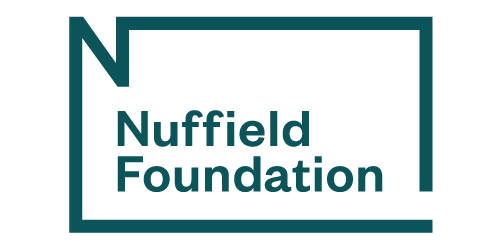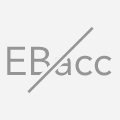

The site provides teachers, parents, students, policymakers and indeed anyone with an interest in national A-Level, AS-Level and GCSE results with analysis of entries and attainment between 2016 and 2021. Data is provided for England, Wales and Northern Ireland, as well as the UK as whole.
Why doesn't Scotland feature in the data?
Two charts are presented on each page for a subject, the upper chart showing the number of entries and the lower chart showing attainment. The text to the right of the charts provides a summary of the data for the UK as a whole and, where applicable, provides guidance and caveats about interpretation.
Each chart can be downloaded as a picture file (JPG or PNG) and the underlying data for each chart can also be downloaded. We hope that users of the site will share these files via blogposts and social media. Use the menu icon in the top right of each chart to do so.
Starting in 2020, where entry numbers are smaller than 10, in some cases the exact number of entries is suppressed in the source data. In these cases, in the entries chart the subject is shown as having five entries.
The contents of the charts can be changed using the drop-downs above them. Note that the drop-down above the upper chart, which shows number of entries, also controls the lower chart, which shows attainment.
For A-Levels and AS-Levels, you can choose to display data for England, Wales, Northern Ireland or the UK as whole. On the lower chart, you can choose to display attainment for boys, girls or all pupils for the selected country. All data for A-Levels relates to entrants of all ages, which will include adult entrants.
For GCSEs, you can either choose to display data for a country or for an age cohort, but not both. In other words, choosing to display 16-year-olds will return data for all 16-year-olds in the UK. On the lower chart, you can choose to display attainment for boys, girls or all pupils for either the selected country or the selected age cohort.
Progress 8 was introduced as the headline measure used in secondary school performance tables in England in 2016. It is based on attainment in English/English literature; maths; three EBacc subjects (see below); and any three other subjects. It has led to an increase in take-up of EBacc subjects.
Results in maths and English carry greater weight in the calculation of Progress 8 than other subjects: maths results are double-weighted, as are the higher of an entrant's English language and English literature results, so long as both subjects have been taken.
 Subjects that are double-weighted in Progress 8 are identified by this symbol.
Subjects that are double-weighted in Progress 8 are identified by this symbol.
 Subjects that are not double-weighted in Progress 8 are identified by this symbol.
Subjects that are not double-weighted in Progress 8 are identified by this symbol.
The English Baccalaureate (EBacc) is a performance indicator used in secondary school performance tables in England. It is based on attainment in English/English literature, mathematics, two science subjects (including computing), a humanity (history or geography) and a modern or classical foreign language (the most common of which are French, German and Spanish).
 EBacc subjects are identified by this symbol
EBacc subjects are identified by this symbol
 Non-EBacc subjects are identified by this symbol.
Non-EBacc subjects are identified by this symbol.
For each subject or group of subjects, a reform date is given on the right-hand side of the page.
Reform dates relate to the date when most students in a given home nation will be entered for reformed versions of the qualifications. Some students may enter qualifications offered by an exam board in a home nation other than the one in which they are taking their examinations.
Where a subject is listed as being discontinued, the discontinuation data listed is the final year in which first-time entries are possible. There can still be entries the following year, where resits are taken.
The first of up to three boxes of text on subject pages provides definitional information. Note that this text box only appears where such a definition is required.
All subject pages contain explanatory text, that draws trends in entry numbers since 2016, or (where later) the date from which data is available. The text also sets out how attainment in the subject being considered compares to attainment across all subjects at GCSE/AS-Level/A-Level.
warning Indicated by this symbol, the bottom text box on subject pages provides key context needed to understand the other information presented on the page. Note that this text box only appears where such contextual information exists.
vertical_align_topSignificant reforms to qualifications and accountability policies have been taking place in each country since 2016 and these affect not only comparability between the three home nations but also the year-on-year comparability of the data for each country. Notes on the impact that these issues have on individual subjects can be found on the relevant subject page.
Entry numbers are affected by changes in the size of the population as well as changing popularity. Each nation has policies to encourage take-up of particular qualifications. In addition, special interest groups and royal societies have various initiatives to increase take-up of subjects, e.g. STEM (science, technology, engineering and maths).
Note that, when reading the explanatory text that accompanies the charts, subjects with small entry numbers are more likely to see large percentage changes in entries - a 26% increase in entries in a subject that started off with a small number of entries, for example, would be less surprising that it would be for a subject that started off with a large number of entries.
In cases where the number of entries is very small, values have been suppressed. In some cases, additional related values have also been removed as a result of secondary suppression. Where values have been suppressed, there is no marker displayed in charts.
In England, reformed GCSEs graded 9-1 began to replace legacy GCSEs graded A*-G in 2017. To provide comparable trend data, data on key grades is presented.
Broadly speaking, reformed grades 9-7 correspond to legacy grades A*-A, grades 9-4 correspond to A*-C and 9-1 correspond to A*-G.
Consequently, the three lines on the chart showing GCSE attainment represent percentages of pupils achieving grade A/7 (or above), grade C/4 (or above) and grade G/1 (or above).
For A-Levels and AS-Levels, where there has been no change in grading structure since 2016, only certain grades are shown on charts - selected grades is the terminology used - though users are able to choose to view all grades.
In cases where the number of entries is very small, values have been suppressed. In some cases, additional related values have also been removed as a result of secondary suppression. Where values have been suppressed, there is no marker displayed in charts.
vertical_align_topSubjects featured in the data presented on this site are A-Levels, AS-Levels, full course GCSEs and full course vocational GCSEs awarded by one of the award bodies that make up JCQ. Qualifications such as IGCSEs (international GCSEs) do not therefore feature in the data.
Entry and attainment data is provisional data published by the JCQ. Full details of sources used, including sourcing for other information, can be found on the About page.
The education systems of England, Wales and Northern Ireland are broadly similar, with students taking a range of qualifications and public examinations at age 16 (primarily GCSEs) and post-16 (AS-Levels and A-Levels, among others).
Scotland has a distinct system, with students typically taking National 5 qualifications, Highers and Advanced Highers. Results for these qualifications are not available from JCQ.
vertical_align_top